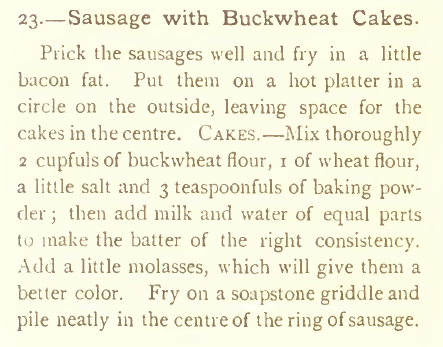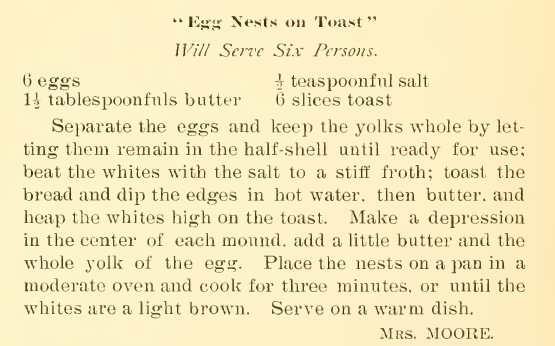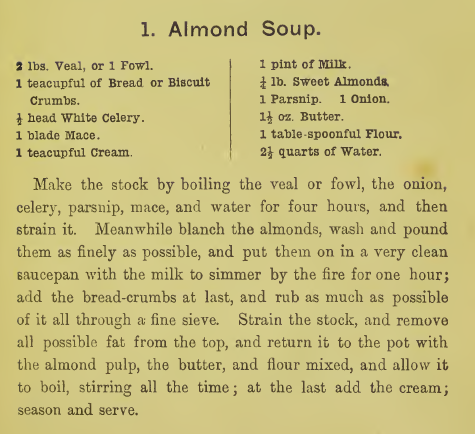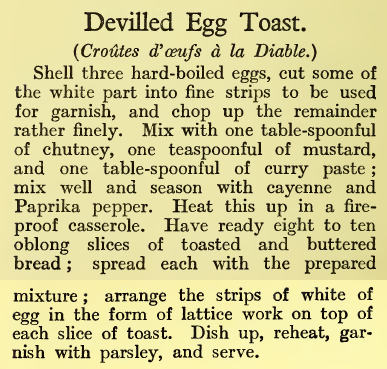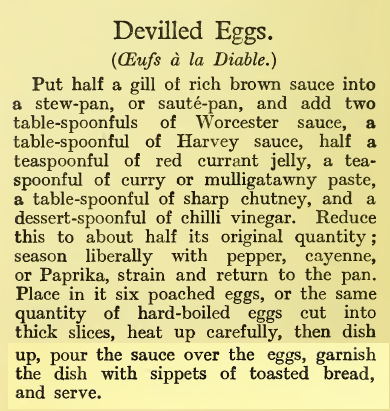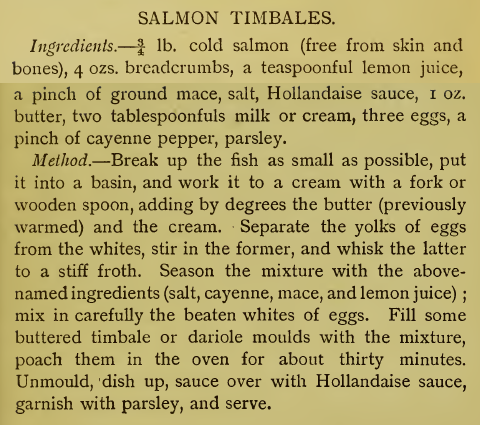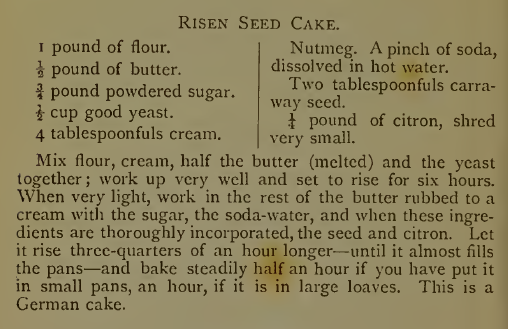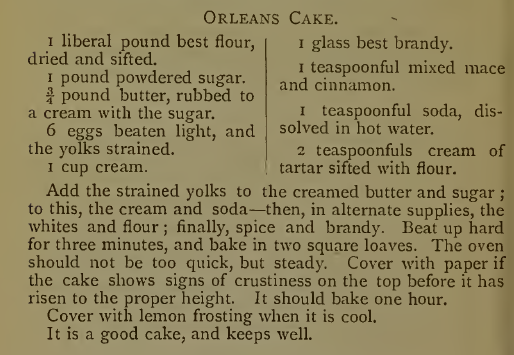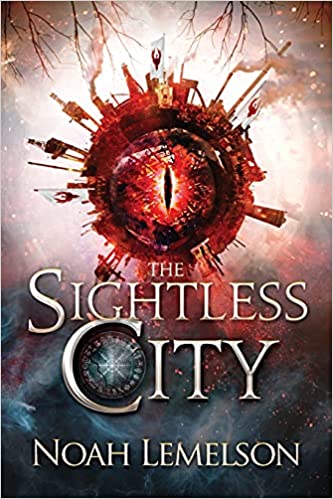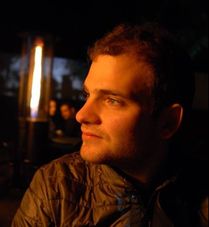Tea Time with Madame Askew
Recipes for Winter 2023
It’s the Winter Holiday Season and that is a good reason to enjoy some dishes which, while perfectly delicious any time of year, seem to be served even more during the holidays.
The chefs here at the Embassy wanted to share these recipes, and hope they make your winter a bit more flavorful.
Breakfast
Yorkshire pudding
Souffle
Lunch
Lentil Soup
Chestnut Soup
Dinner
Duck with Orange Sauce
Salmon Genevese
Dessert
Black Pudding
Plum (Christmas) Pudding
Embassy breakfasts will almost always be served with tea or coffee, and fruit juice, along with toast and spreads, rounded out with a bit of fruit and cheese. Seriously, how can any breakfast not include cheese?
One tasty way to offset the chill of a winter morning is with the light, irregularly shaped popovers that are Yorkshire Pudding. Our recipe was published in 1890 but there are written recipes 150 years earlier, and it’s likely that it was made long before then, too.
Yorkshire Puddings always feel like a special treat at the Embassy, even though is simple and easy to make. Visiting dignitaries enjoy them daily, and so should you.
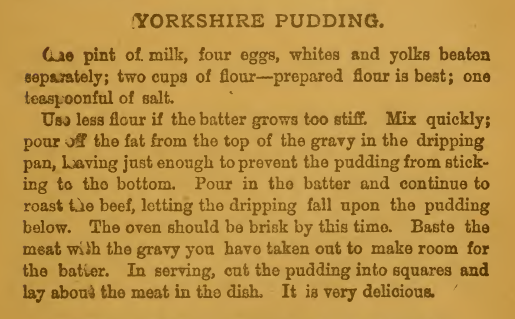
Yorkshire Pudding, Compendium of Cookery, 1890, P65
Originally, these would be made in a pan greased with drippings from roast beef, and perhaps dripped with more while baking in the oven. More modern steampunk kitchens may opt for butter or a non-stick spray of choice. A few tips have emerged after being baked for a few hundred years by thousands of home bakers:
- Pre-heating the muffin pan may encourage the dough to rise a bit higher. We’ve never noticed any difference in flavor, but if bigger is better in your home, starting with a warm to hot pan won’t hurt.
- Resting the dough, especially overnight, seems to contribute significantly to a higher lighter rise.
- Beat the egg whites to a foam, but don’t over beat them.
Bake these at 450 F (230 C) for 10-15 minutes. Know the uniqueness of your oven and adjust timing as needed.
Another light and fluffy way to start a winter morning is with a souffle. Souffle’s seem to gained a reputation as difficult and temperamental to make, but Embassy chefs disagree. The ingredients as as simple as the Yorkshire Pudding, and it’s all about whipping the egg whites to a stiff froth. Modern versions will add some Cream of Tartar to the egg whites to help strengthen the foam.
The rising and height of a souffle is entirely dependent on heat and steam. It is recommended to serve the souffle right from the oven to be most visually impressive. As the oven’s fire and your guests’ accolades cool down, don’t be alarmed as this puffy treat begins to deflate somewhat.
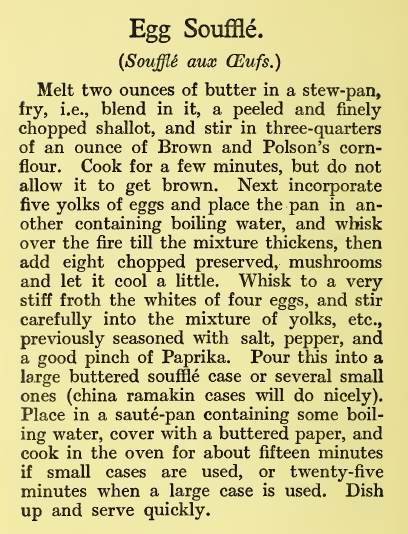
Souffle, https://archive.org/details/cu31924000693931/page/n21/mode/2up, 1900, p54
Cheese a standard staple, almost a prerequisite, at the Embassy, but other modern recipes suggest a range of other additional ingredients – vegetables, seafood, hot sauces, etc.
Lunches at the Embassy tend to be lighter affairs, a respite from everyone running around being “busy”. Depending on time of the year and temperature, service will include either iced tea or warm cider, a salad of seasonal or greenhouse greens, occasionally a side roll, finishing with a smaller sweet dessert.
Today’s lunch menu offers a choice between two soups, lentil or chestnut. On a chilly day, soups can be the perfect way to warm back up.
Pureed lentils form the base of the first soup, with a mild nutty or bean taste. Lentils are quite versatile, pairing well with other vegetables. herbs, and spices. The recipe calls for using a mortar to puree the lentils, but a modern steampunk food processor or blender will achieve the same result. Alternately, leave the lentils whole for a different texture.
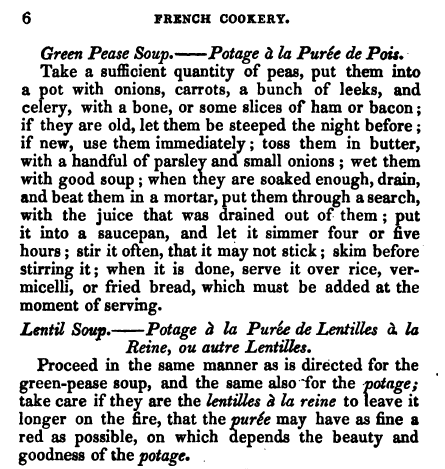
Lentil soup, Lentil Soup-Art of French Cookery-1827-p6
This recipe for the Chestnut Soup similarly uses the mortar to create a puree of boiled chestnuts. Although there are no additional vegetables originally included, adding some preferred items would enhance the overall flavor.
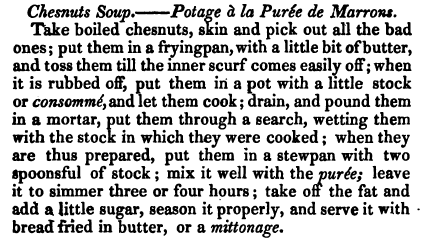
Chestnut soup,Chestnut Soup-Art of French Cookery-1827-p7
Embassy dinners are a fun and festive event. Guests are well dressed and (mostly) well mannered, the table is precisely set with gleaming flatware, clear glasses, and pressed napkins.
Winter holiday dinners can be a way for everyone to come together in celebration, dismissing the shorter daylight in favor of candle light and jocularity. We look back over the year and say, “Well done! We’ve made it through another one!”.
These meals will include salad and rolls, several side vegetable dishes, and complimentary pairings of wine.
As a change from turkey or ham, the menu calls for duck. Pheasant and other wild game are also popular options this time of year. It may come down to availability, and interest, in your area. Some service options seem to just call for a cooked duck, nothing fancy, and the real flavor is left to a gravy or other sauce. This recipe calls for marinating the duck first with onions and spices. Bay leaves can also be added for additional flavor. The orange sauce makes use of most of the whole orange, for a fuller flavor.
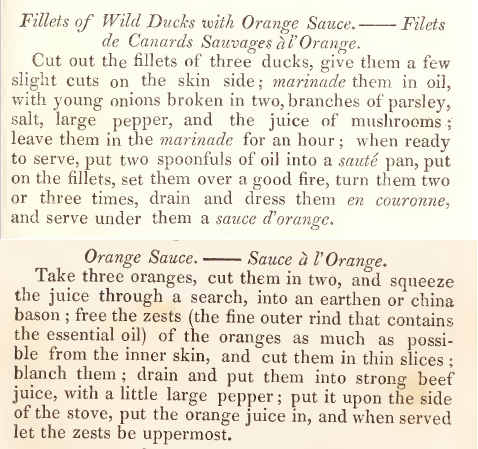
Duck, Duck with Orange Sauce – Art of French Cookery-1827-p163,32
Salmon recipes similar range from “bake and serve” to those with more additional flavors. Many more and in such a mouth watering combination. Mace (like nutmeg), Madeira, cayenne… this is not a serving of plain fish.
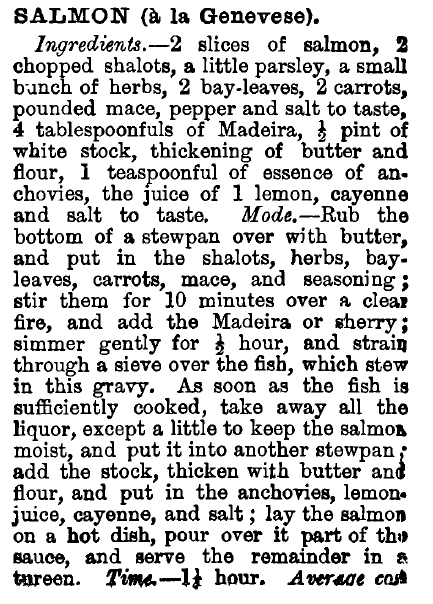
Salmon, Salmon Genevese-Beetons All About Cookery-1887-p299
No holiday dinner would be complete without dessert. In addition to some fruit, nuts, and cheese (of course), tea and coffee, there will be some amazing treat as the capstone of the menu. Often not too sweet, as sugar was expensive, but just as flavorful as the preceding dinner.
This Black Pudding gets its color from molasses, which flavor is offset by allspice, cloves and cinnamon. Very sticky, and very addictive – it’s difficult to avoid a second piece when it’s still warm.
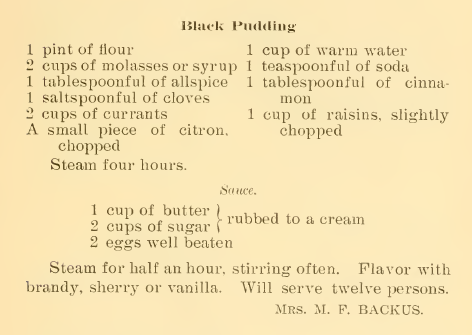
Black Pudding – Clever Cooking, 1896, p161
The pièce de résistance of the Embassy Winter Menu would be a traditional Christmas / Plum / Figgy Pudding. Not just an annual tradition at the Embassy, but a dessert of nuts and fruit to be savored. With or without a tiny toy treasure inside, and with or without any variations of a brandy or rum sauce, the base pudding is delicious and satisfying.
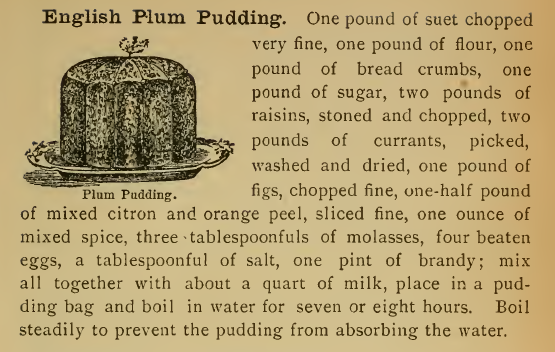
Plum Pudding-Century Cookbook-1894-p145
However you celebrate your winter holidays, we at the Embassy wish you great happiness and
health!

